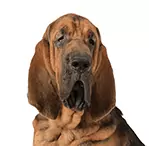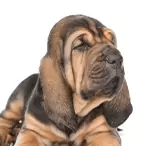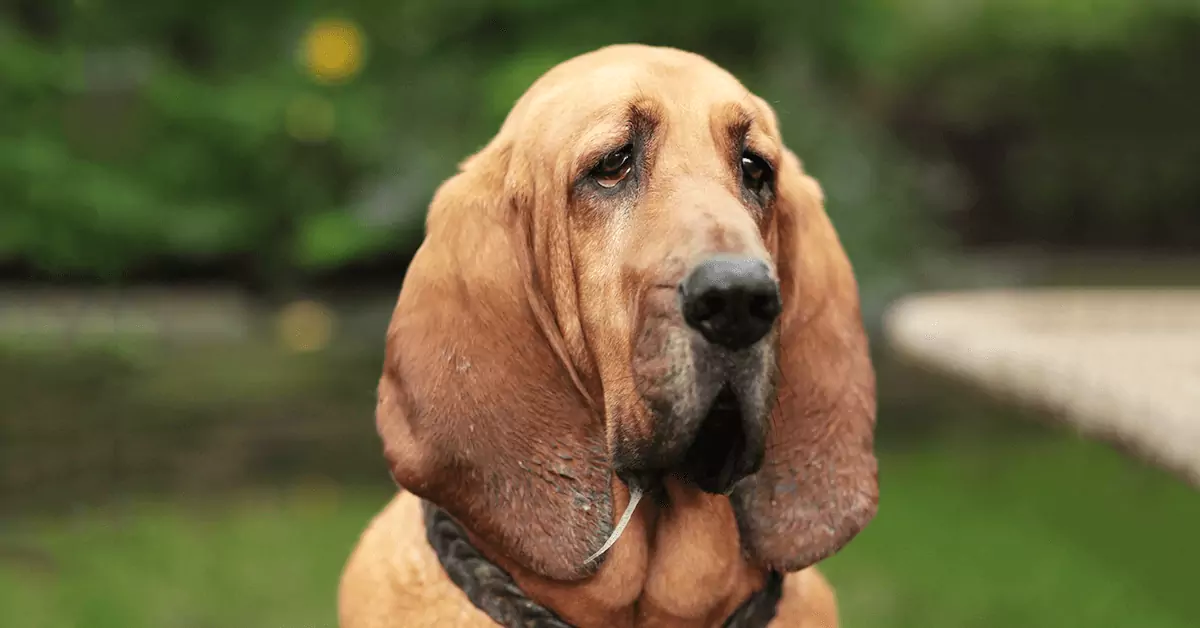
Meet the Bloodhound
Calm Canine
Top Working Dog
Pawfect Playmate
My Many Looks
My Breed Characteristics
Furbulous Fact
As I Grow Up
History of My Breed
Care Tips
Training Tips
Personality
Adventurous
Headstrong
Sensitive
Group
Hound
Origin
United States
Life Span
10-12 years
Breed Popularity
#46 of 193
Height Range
23-27 Inches
Weight Range
80-110 Pounds
Coat Details
Type
Short
Texture
Smooth
Features
Occasional specks of white or white markings on chest, feet, and stern
Colors
Black & Tan, Liver & Tan, Red
Hypoallergenic
Cost to Buy
$450-$1,200
Lifetime Care Cost
$21,945
My Many Looks
My Breed Characteristics
Furbulous Fact
As I Grow Up
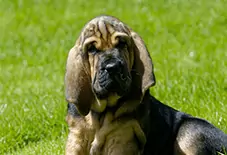
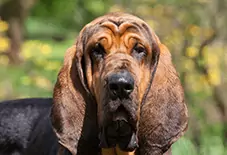
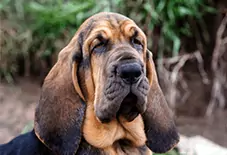
History of My Breed
Care Tips
from Dr. Jessica Greenberg, Associate VeterinarianTake precautions against GDV.
Bloodhounds are at higher risk for gastric dilatation volvulus (GDV), a potentially fatal twisting of the stomach that occurs after overeating. Otherwise known as bloat, GDV is more common in deep chested dogs like bloodhounds. The most foolproof way to avoid this condition is to have the stomach surgically “tacked” to the abdominal wall so it won’t twist. This procedure can be done at the same time as a spay or neuter. Otherwise, minimize your risk by feeding measured meals twice a day, and keep all food locked up out of reach of dogs, and rest hounds for one hour after meals.
Take care of your Bloodhound’s eyes.
Bloodhounds are predisposed to both entropion (eyelid or lids that roll in) and ectropion (eyelid or lids that roll out). Both of these conditions can dry out or irritate the eyelid, and in severe cases, can cause blindness. These conditions are usually evident between 4-6 months of age. Ectropion and entropion are both treatable by surgery.
Take good care of your Bloodhound’s skin and ears.
Bloodhounds have many skin folds which can get irritated or infected if the dog swims frequently or has any skin allergies. Skin fold dermatitis looks like angry, red skin that may or may not have odor or discharge. Bloodhounds have very long, floppy ears and very long ear canals that can get infected if a dog has allergies or swims often.
Training Tips
from Dr. Jessica Greenberg, Associate VeterinarianPrioritize leash training.
Leash training is important for Bloodhounds because of their innate desire to pursue interesting scents. Teach your puppy how to heel, which is a form of walking where the dog isn’t pulling you at all and are instead walking right beside you at the same pace. They’ll want to run ahead, and you’ll want to control that. It’s also important to teach them how to behave off the leash because that’s when they’re the most comfortable.
Coach your pup out of its stubbornness.
If your Bloodhound puppy is being obstinate and repeating unwanted behaviors, turn around, ignore them for a few seconds, and take a deep breath. The trick is not letting them seize control of the narrative by doing something else to get your attention, whether it's barking or gnawing on the couch chair. Remember to reward the good behaviors with treats and love, ignore the bad behaviors, and always stay positive to bring out the best in your pup.
Train your pup to respond to commands – the first time.
As you teach your pup verbal commands like “come,” “sit,” “stay,” and the like – only give the verbal command once. If you give a command twice, you may accidentally be teaching your pup to ignore you the first time. When a pup who knows how to sit doesn’t sit when you tell it to – it’s testing a boundary. Use your body language to emphasize a point. For example, try raising your hand in a closed fist as you give your command – firmly and gently.
My Many Looks
My Breed Characteristics
Furbulous Fact
As I Grow Up
History of My Breed
Care Tips
Training Tips
-
Personality
Adventurous
Headstrong
Sensitive
-
Group
Hound
-
Origin
United States
-
Life Span
10-12 years
-
Breed Popularity
#46 of 193
-
Height Range
23-27 Inches
-
Weight Range
80-110 Pounds
-
动物皮毛
Type
Short
Texture
Smooth
Features
Occasional specks of white or white markings on chest, feet, and stern
Colors
Black & Tan, Liver & Tan, Red
-
Hypoallergenic
-
Cost to Buy
$450-$1,200
-
Lifetime Care Cost
$21,945
